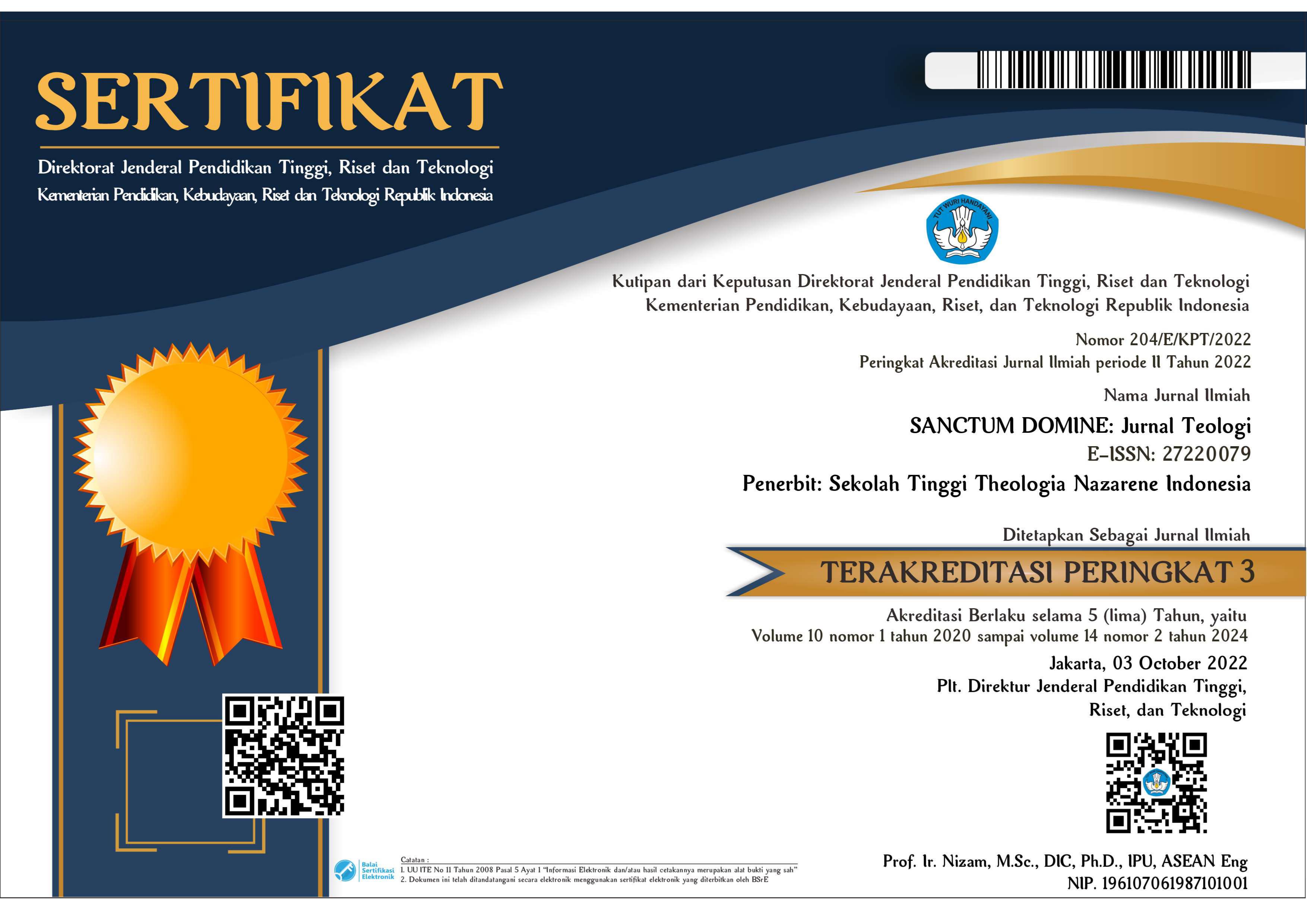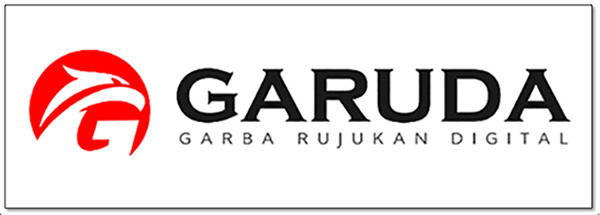Mempertanyakan Gelar Abraham sebagai Bapa Orang Beriman Setelah Peristiwa di Mesir - Kejadian 12:10-20
Abstract
The title of Abraham as "father of the faithful" written in the Bible contains various meanings related to the nature of the concept of salvation. This title breaks down some of the stories and history behind it in Genesis 12:10-20 which contrasts with the awarding of the title. A comprehensive in-depth study is needed from various points of view to find out the basis and purpose of God's choice fell on Abraham. Paul's perspective in the Romans and James's perspective in the James become the chosen reference for exploring the facts behind the title. The author's view is presented as a conclusion to the writings of Paul and James, and is understood as God's sovereign perspective on the salvation of mankind.
References
Davis, John J, Eksposisi Kitab Kejadian: Suatu Telaah, Malang: Gandum Mas, 2001.
Fanning, Buist M, A Biblical Theology of the New Testament, Dallas Theology Seminary Faculty, Malang: Gandum Mas, 2014, Martin Dibellius, James: A Commentary On The Epistle of James, Hermeneia, ed. Helmut Koester, trans. Michael A. Williams, rev. Heinrich Greeven (Philadelphia: Fortress), 1976.
Fanning, Buist M, A Biblical Theology of the New Testament, Dallas Theology Seminary Faculty, Malang: Gandum Mas, 2014; Joachim Jeremias, “Paul And James”, Expository Times 66 (1954-1955), hal. 370-371; Bo Reicke, The Epistles Of James, Peter and Jude, The Anchor Bible Garden (Garden Ciy, NY: Doubleday, 1964), hal. 34-35; Davids, The Epistle Of James, hal. 132; dan Moo, James.
Harris, W. Hall, A Biblical Theology of the New Testament, Dallas Theology Seminary Faculty, Malang: Gandum Mas, 2014.
Harlow, R.E, Tafsir Kitab Kejadian, Surabaya: Yakin, 1977.
Lowery, David K, A Biblical Theology of the New Testament, Dallas Theology Seminary Faculty, Malang: Gandum Mas, 2014.
Lempp, Walter, Tafsiran kejadian 12:4 – 25:18, Jakarta: BPK Gunung Mulia, 1980.
Lempp, Walter, Tafsiran ALkitab Kejadian 12:4-25:18, Jakarta: BPK Gunung Mulia, 1994.
Longman, Tremper III, Panorama Kejadian: Asal Mula Sejarah, Jakarta: PPA, 2010.
Ludji, Barnabas, Pemahaman Dasar Perjanjian Lama, Bandung: Bina Media Informasi, 2009.
McGrath, Alister E, Sejarah Pemikiran Reformasi, Jakarta: BPK Gunung Mulia, 1997.
Ridderboss, Herman, Paulus: Pemikiran Utama Theologianya, Surabaya, Momentum, 2015.
kbbi.web.id.
Copyright (c) 2020 SANCTUM DOMINE: JURNAL TEOLOGI

This work is licensed under a Creative Commons Attribution-NonCommercial-ShareAlike 4.0 International License.
Copyright:
SANCTUM DOMINE: Jurnal Teologi will validate, produce, disseminate, and act as steward in the long-term curation of every article published. In order to achieve this, the author typically requires a transfer or “assignment” of the copyright in the article. As is the case for open access publishing, the author (or copyright owner of the article, if different) signs an author publishing agreement. The agreement incorporates the necessary transfer of copyright.
After assigning copyright, the author will still retain the right to:
- Be credited as the author of the article.
- Own and exercise any trademark or patent rights held by author and addressed in the article.
- Make printed copies of the article to use for a lecture or class that the author leading on a non-commercial basis.
- Share the article with friends, colleagues and influential people the author would like to read the work.
- Present the article at a meeting or conference and distribute printed copies of the article on a non-commercial basis.
License:
This work is licensed under a Creative Commons Attribution-NonCommercial-ShareAlike 4.0 International License.
You are free to:
- Share — copy and redistribute the material in any medium or format
- Adapt — remix, transform, and build upon the material
- The licensor cannot revoke these freedoms as long as you follow the license terms.
Under the following terms:
- Attribution — You must give appropriate credit , provide a link to the license, and indicate if changes were made . You may do so in any reasonable manner, but not in any way that suggests the licensor endorses you or your use.
- NonCommercial — You may not use the material for commercial purposes .
- ShareAlike — If you remix, transform, or build upon the material, you must distribute your contributions under the same license as the original.
- No additional restrictions — You may not apply legal terms or technological measures that legally restrict others from doing anything the license permits.
Notices:
You do not have to comply with the license for elements of the material in the public domain or where your use is permitted by an applicable exception or limitation .
No warranties are given. The license may not give you all of the permissions necessary for your intended use. For example, other rights such as publicity, privacy, or moral rights may limit how you use the material.




8.png)









